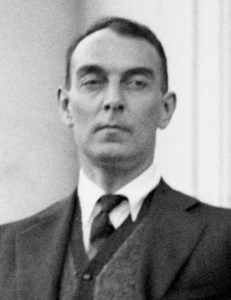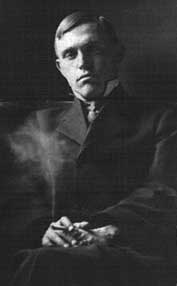Damon Runyon is Not Ring Lardner
This post has its roots in one simple fact: Damon Runyon is not Ring Lardner. Or perhaps I should say that Ring Lardner is not Damon Runyon.
As I mentioned in my last blog post: I mixed the two men up in my head. My fingers typed Ring Lardner in my original notes but my brain immediately jumped to Damon Runyon’s short stories set on Broadway in the early years of the twentieth century and Guys and Dolls, the musical based on those stories.* (One of my all-time favorites.) I didn’t remain confused for long. The first source I looked at in preparation for writing about the Chicago Tribune’s Army Edition, made it clear that Runyon was not the sports writer I was looking for. It also made it clear that while I know and love Runyon’s stories, I knew nothing whatsoever about Runyon. That was easily fixed.
- Ring Lardner
- Damon Runyon
It turns out that confusing Lardner and Runyon wasn’t that big a jump.** They were close in age, born in 1885 and 1880 respectively. Both recreated themselves with a strategic name change. Ringgold Wilmer Lardner decided to go by Ring for obvious reasons. Alfred Damon Runyon dropped the Alfred when he enlisted in the Army during the Spanish American War and discovered that Alfred was one standard deviation from Percival as far as the average enlisted man was concerned. Both were popular sports writers whose syndicated columns reached a national audience : Lardner with the Chicago Tribune and Runyon with the Hearst papers. Both successfully made the leap into fiction, writing in what purported to be very specific regional vernaculars, though I suspect that in both cases the idiom was in large part their own creation. And both traveled to Europe to report on the experience of American soldiers in “the war to end all wars”— the point at which my confusion between the two started.
Their war coverage is a good place to look at the differences between the two.
As I mentioned in my previous post, the Tribune send Lardner to France to report on “the funny side of the war.” He was there for two months soon after the American Expeditionary Force arrived. His first piece of “war reporting”, titled “Lardner Meets Horrors the Wake of War,” begins with the fact that the water in his Paris hotel was turned off for a course of several hours and turns a small inconvenience into a satirical, stereotype-laden piece about the French not liking to drink water or to bath in it.
Runyon, by contrast, was an actual war correspondent. World War I was not his first experience of war. Runyon fought in the Spanish-American War, where he was wounded twice and earned the nickname “The Colorado Kipling” for his stories and verses about the experience. Later he traveled as a correspondent with Black Jack Pershing’s Punitive Expedition in search of Pancho Villa. He arrived relatively late to World War I, in October 1918,**** and primarily covered the Meuse-Argonne Offensive . His most powerful pieces were written not from the battlefield, but on the way home aboard the USS Leviathan, traveling with a large number of wounded men. And perhaps that is not surprising, given that his best work is stories of the man (and woman) on the street, even if that street is very specifically seventeen blocks of W. 27th Street, peopled by “burlesque dolls and hoofers, and guys who write songs, and saxophone players, and newsboys, and newspaper scribes, and taxi drivers…” Not to mention bookies, horse players, gin runners, and other “wrong gees.”
I bet none of us ever confuse Ring Lardner with Damon Runyon again.
*One of those stories, “Little Miss Marker, also inspired a movie by the same name starring six-year-old Shirley Temple. A reminder that sent me down the rabbit hole looking for streaming options.
**FYI: You also have to be careful not to confuse Lardner with his son, Ring Lardner Jr, who turned his own satirical voice to screenwriting, winning Oscars for Woman of the Year and M*A*S*H. I would apologize for the digression, but this post is essentially me taking you with me down a series of rabbit holes, and giving you all too clear a picture of how my brain works in the process.***
*** I would like to think that my mind is as orderly as library card catalog: the old kind that literally had little drawers that held 3 by 5 cards, arranged alphabetically by author’s last name, title, and subject headings. Instead it looks more like this:
Instead it looks more like this:
****For those of you who don’t carry the relevant dates in your head, the Armistice that ended the war was signed November 11, 1918.



As a fellow fan of Damon Runyon’s stories and confuser of him with Ring Lardner, I enjoyed this post!
Glad to know I’m not the only one!